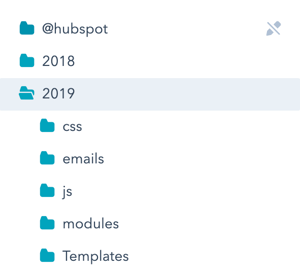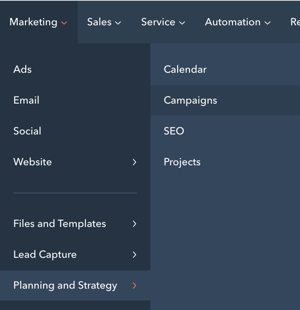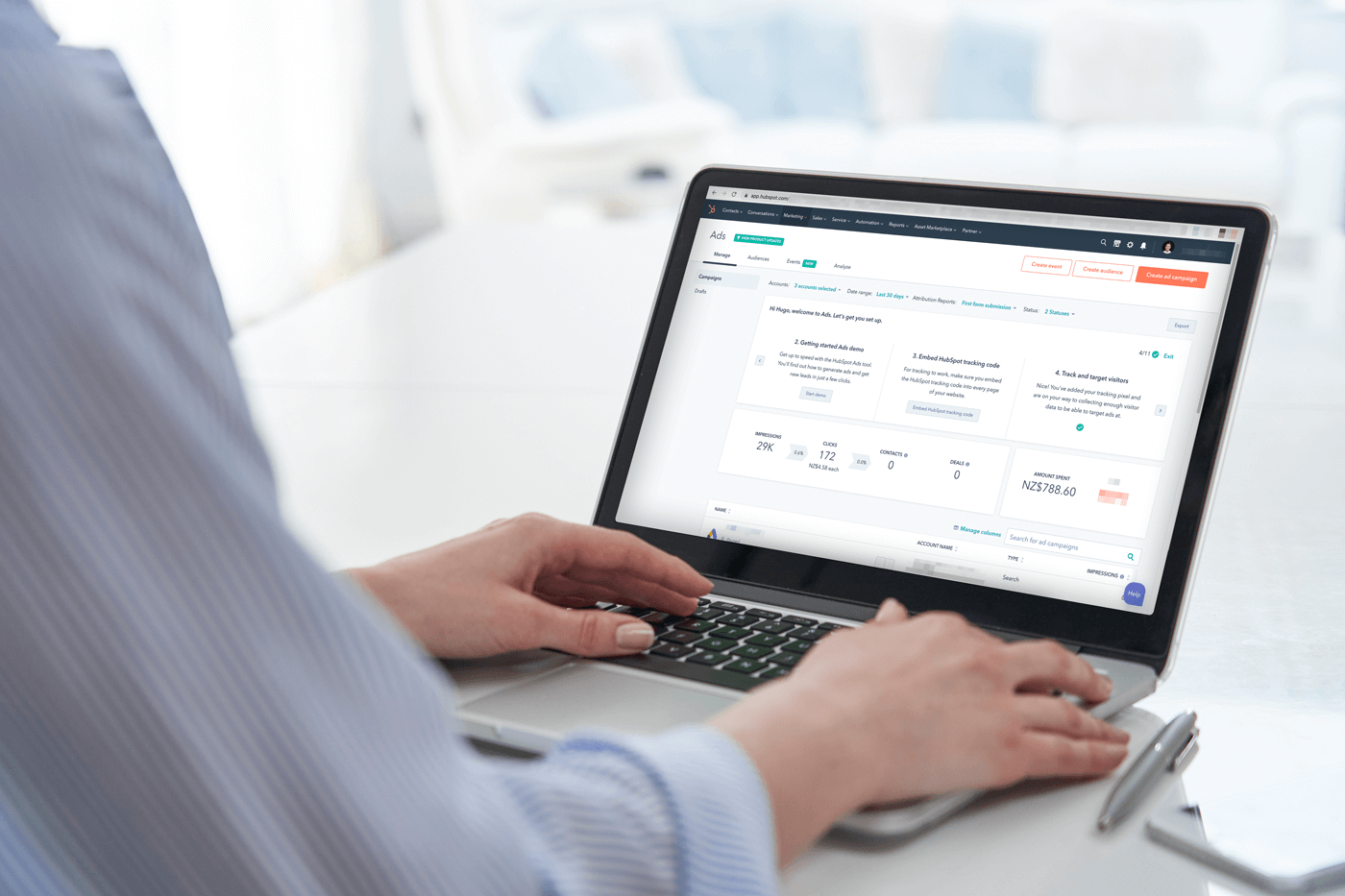If your business has been using HubSpot Marketing Hub for some time, chances are, your portal could be in need of a clean up. Perhaps you’ve had staff changes, there’s been an increase of users on the platform or the volume of content has sky-rocketed. We know how easy it is for your portal to become unwieldy so in this blog, we share our top tips for conducting a portal audit.
All your users need to be able to locate HubSpot assets easily - particularly if you have multiple groups of users in the platform. To do this, it’s important to create a master naming conventions document that provides examples of how assets are to be named.
The more complex your organisation, the more sophisticated these naming conventions need to be. For example, if you have a small team and only one or two people regularly administering assets in HubSpot then simple naming conventions like ‘Campaignname_LP_2020’ will suffice.
Larger organisations with multiple divisions and admins might need to be more specific e.g. Country/region_Division-name_Campaignname_LPname_June20’.
A rule for labelling content is by its nature. For example, label landing pages ‘LP’ in the title, thank you pages ‘TYP’, and so on. Be sure to add the year and the context they are created for. But be careful about leaving key information at the end of the name - HubSpot truncates names in the dashboard view if they’re long.
Tip for experts: HubSpot has recently added folder structures to many sections of the portal. This is a great way to organise your content, especially if you have lots going on. Be sure to use your naming conventions for folder titles.
If you’re struggling with multiple teams and brands all sharing the same HubSpot Marketing Hub portal, get in touch with us to check you’re on the right licence. HubSpot Marketing Hub Enterprise has a ‘teams’ feature that allows you to set up groups of users with different permissions. Get in touch with us to audit your platform so we can provide you with a licence recommendation
As your organisation scales and as different users come and go, it’s very common for files, pages, templates and content to be added all over the place. Without a proper system in place, it doesn’t take long before your assets become a nightmare to navigate.
That’s where a portal audit comes in. An audit will allow you to:
-
Streamline and organise your HubSpot assets
-
Delete outdated content
-
Discover missed opportunities
-
Improve and standardise your admin processes
-
Manage the risk of accidentally deleting live elements!
What are the key areas of HubSpot Marketing Hub to focus on?
As the HubSpot marketing portal has evolved, there are many assets that should be reviewed in an audit. Here’s a few of the top ones we include in our audits:
-
File Manager
-
Design Tools
-
Forms
-
CTAs
-
Emails
-
Blogs
-
Lists
-
Landing and thank you pages
-
Campaigns
How to do an audit
When conducting an audit, there are some key steps you want to follow to ensure your audit is successful:
-
Use naming conventions
-
Don’t be scared to delete
-
Create an effective filing system
-
Use Campaigns
-
Document your audit process
1. Use naming conventions
All your users need to be able to locate HubSpot assets easily - particularly if you have multiple groups of users in the platform. To do this, it’s important to create a master naming conventions document that provides examples of how assets are to be named.
The more complex your organisation, the more sophisticated these naming conventions need to be. For example, if you have a small team and only one or two people regularly administering assets in HubSpot then simple naming conventions like ‘Campaignname_LP_2020’ will suffice.
Larger organisations with multiple divisions and admins might need to be more specific e.g. Country/region_Division-name_Campaignname_LPname_June20’.
A rule for labelling content is by its nature. For example, label landing pages ‘LP’ in the title, thank you pages ‘TYP’, and so on. Be sure to add the year and the context they are created for. But be careful about leaving key information at the end of the name - HubSpot truncates names in the dashboard view if they’re long.
Tip for experts: HubSpot has recently added folder structures to many sections of the portal. This is a great way to organise your content, especially if you have lots going on. Be sure to use your naming conventions for folder titles.
If you’re struggling with multiple teams and brands all sharing the same HubSpot Marketing Hub portal, get in touch with us to check you’re on the right licence. HubSpot Marketing Hub Enterprise has a ‘teams’ feature that allows you to set up groups of users with different permissions. Get in touch with us to audit your platform so we can provide you with a licence recommendation.
2. Don't be scared to delete
To clear clutter from your portal, delete any files that are obviously outdated or sitting in draft. HubSpot makes this process simple, as it specifies if any files are being used or depended on by anything on your live website.
Important Tip: If during your clean up process you decide to delete live content pages - be very careful! You can severely damage your SEO by failing to put 301 redirects in place for live pages. Again HubSpot makes this easy. To set up a 301 redirect go to:
• Copy the URL of the page you want to delete
• Go to Settings >Domains and URLS >URL Redirects
• Add URL redirect by pasting in the old page, and selecting a relevant live page to redirect traffic to (if nothing relevant, then use your home page URL).

3. Create an effective filing system in File Manager
File Manager contains three key sections - Design Tools, Files and HubDB (depending on your licence). Your naming conventions should apply, but as it’s often designers and developers working in this section, they should be briefed to come up with a filing system that works for them. If your team can stick to the same system, your assets will be kept well under control and easy to find for everyone - and new designers and developers who may need to work in the platform in the future.

4. Use campaigns
The Campaigns function (located under the ‘Marketing >Planning and Strategy’ tab) is a hidden gem! Campaigns are a great way to quickly see all the HubSpot elements of a campaign in one place - and at a glance, you can see how each element is performing. It just takes a bit of discipline for your team to remember to tag content as it’s created with the correct campaign - but you can do this retroactively as well.

Important Tip: Once you set a campaign name, you can’t change it - ever! So be sure to have your naming conventions established and at hand when setting up new campaigns.
5. Document your audit process
You want your team to be able to repeat the audit process easily and regularly in the future. So it’s a good idea to document your audit process and the steps you need to follow. This will be useful for when new team members or third-parties come on board.
It’s a good idea to run an audit a couple of times a year - particularly if you have a lot of users on the platform. That way, any slip-ups can be caught and quickly rectified, making the everyone’s lives easier and reducing room for error and costly mistakes that could impact your customer experience.
If an audit is on your ‘to do’ list, but just keeps being bumped by more urgent tasks, we’re here to help. If you’d like us to take care of your portal audit, get in touch and we'll sort out a portal audit.

.jpg)









